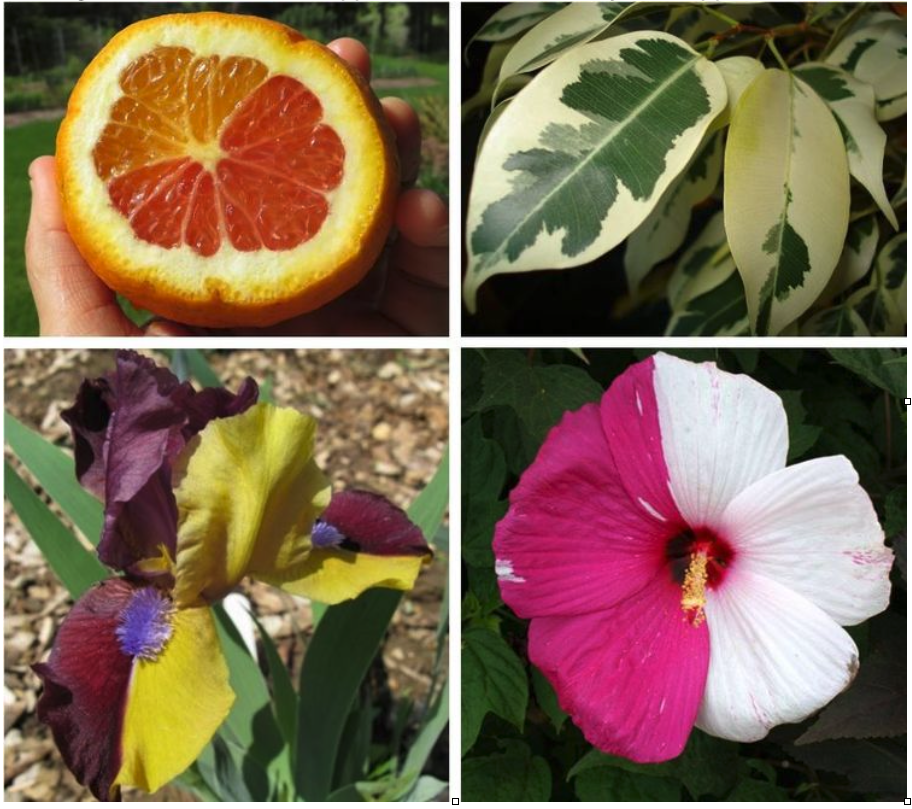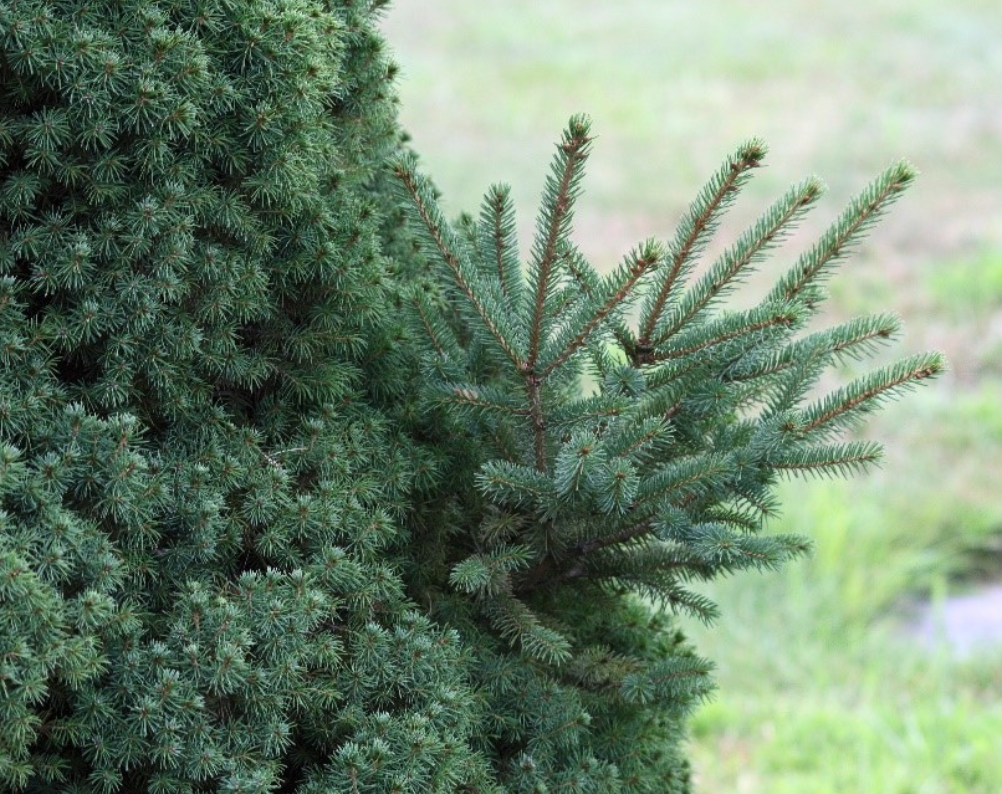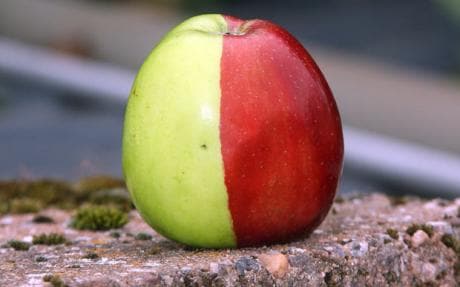Text analysis: Mutation examples and how do they happen?
Dans quelle mesure le(s) document(s) proposé(s) éclaire(nt)-t-il le thème «génétique et évolution» du programme de SVT ?
Mutation examples and how they happen
Ronald Goldy, Michigan State University Extension – April 4, 2019
A little explanation on plant anatomy and development may clarify mutation appearance. Plant structures begin with a single cell. That one cell divides to make two, those two divide to make four, then four divide to make eight and on and on until the structure is complete. That is why some visual mutations appear quite geometric. The hibiscus flower in Photo 1 is mostly half-white and half-pink, indicating the color change occurred at the two-cell stage. That is also what happens in a half red, half yellow apple fruit.

Mutations are due to changes occurring within DNA itself or in the replication/cell division process. Changes within the DNA molecule are referred to as “point mutations” since they occur in a small portion of the DNA but may still have significant effect because they change the “meaning of the code.” Point mutations can be due to damage from cosmic rays, chemicals and viruses. They can also be due to stress from heat, cold, severe pruning or replication error causing a shift in DNA sequences so it no longer makes sense. Many biological systems are pathway-type systems requiring intermediate products to form before producing the final product. Enzymes control these intermediate steps, and interruption in any step prevents the end product from being produced. Therefore, the more steps in the pathway, the more vulnerable the system is to possible change.

Point mutations affect many systems within plants. The most visually dramatic are color or shape. Photo 1 shows various naturally occurring color mutations. The change could affect a portion of a flower, fruit or leaf, or an entire branch. Depending on which tissue is involved, the change can be passed onto the next generation through seeds. They can also be propagated through grafting or cuttings. Some mutations can be unstable and result in producing sections of the plant that revert to their original state (Photo 2).
By https://www.canr.msu.edu/news/mutation-examples-and-how-they-happen


